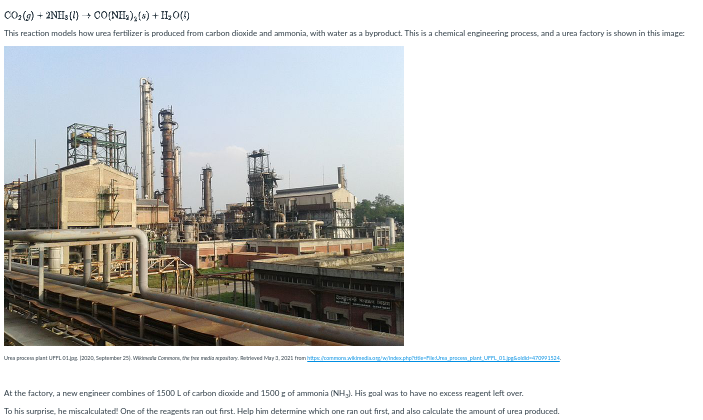CO:(G) + 2NII (1) → COỊNIL), (0) + I, O() This reaction models how urea fertilizer is produced from carbon dianide and ammonia, with water as a byproduct. This is a chemical engineering process, and a urea factory is shown in this image: ntuO san Septenter 2 C e tay y12 om at At the factory, a new engineer combines of 1500 Lof carbon diaide and 1500 g of ammonia (NHJ. His poal was to have no excess reagent left over. To his surprise, he miscalculated One of the reagents ran out first. Help him determine which one ran out first, and also calculate the amount of urea produced.
Thermochemistry
Thermochemistry can be considered as a branch of thermodynamics that deals with the connections between warmth, work, and various types of energy, formed because of different synthetic and actual cycles. Thermochemistry describes the energy changes that occur as a result of reactions or chemical changes in a substance.
Exergonic Reaction
The term exergonic is derived from the Greek word in which ‘ergon’ means work and exergonic means ‘work outside’. Exergonic reactions releases work energy. Exergonic reactions are different from exothermic reactions, the one that releases only heat energy during the course of the reaction. So, exothermic reaction is one type of exergonic reaction. Exergonic reaction releases work energy in different forms like heat, light or sound. For example, a glow stick releases light making that an exergonic reaction and not an exothermic reaction since no heat is released. Even endothermic reactions at very high temperature are exergonic.
1.) Convert both initial reactant values into moles.
2.) Which reagent is the limiting reagent?
3.) What mass of urea, CO(NH2)2, is produced? Urea has a molar mass of 60.1 g/mol.

Step by step
Solved in 4 steps









